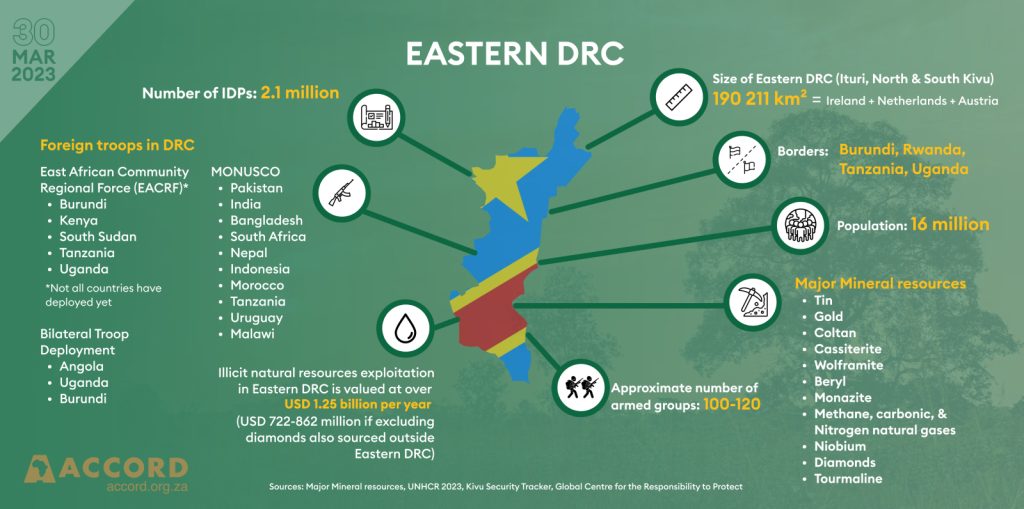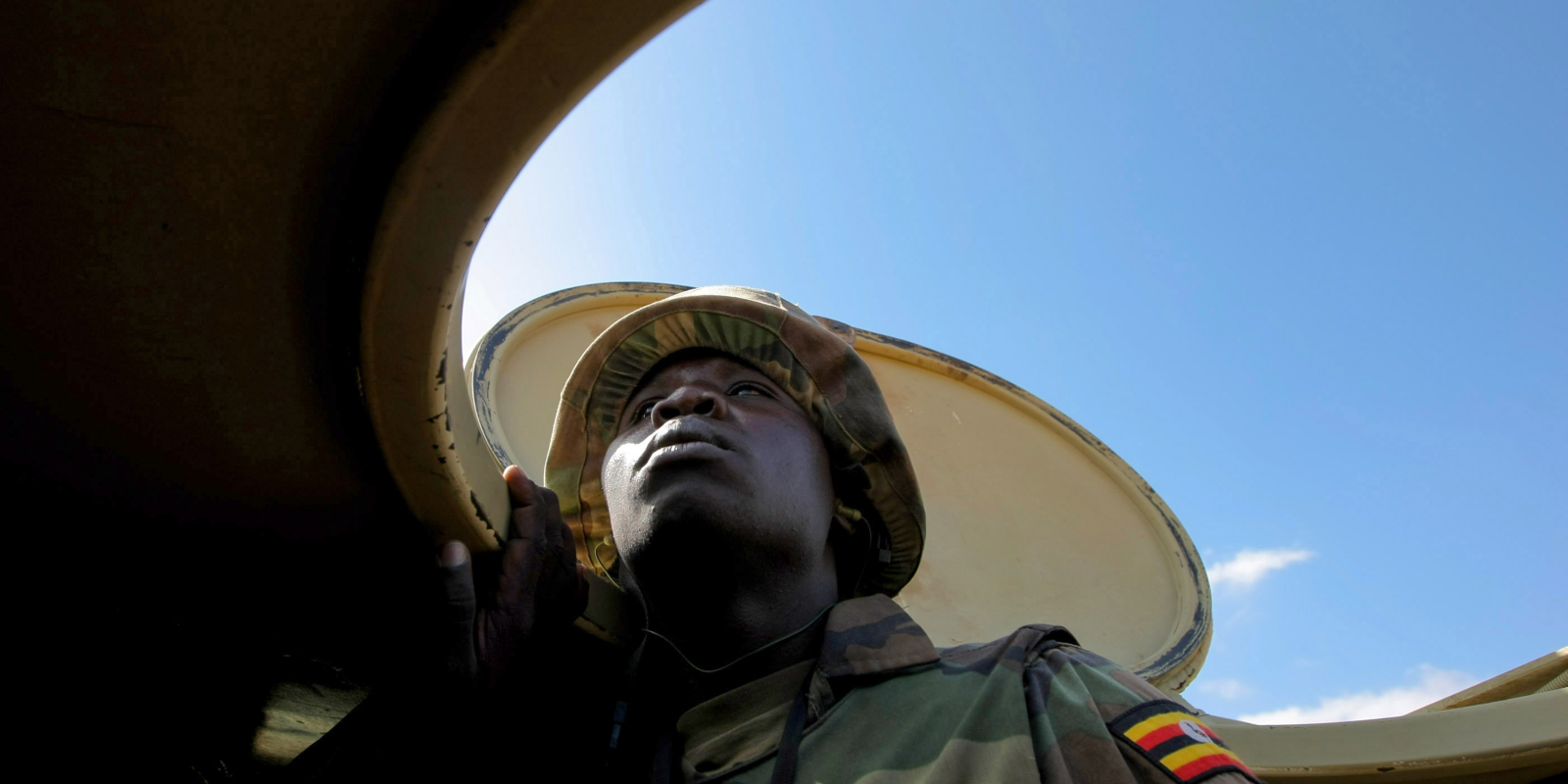The arrival of the Burundian forces as part of the first contingent of East African Community Regional Force (EACRF) in Eastern Democratic Republic of the Congo (DRC) in August 2022, was meant to shore up the political settlement facilitated by the former Kenyan president, Uhuru Kenyatta. According to the plan, the region is to mobilise between 6,500 and 12,000 soldiers to work in cooperation with the Congolese military (FARDC) and administrative forces to support the political dialogue between rebels and the government, provide civilian protection, enforce peace agreements and contain, defeat and eradicate negative forces in the country. It includes creating a buffer zone in liberated areas between the March 23 Movement (M23), and FARDC. The M23 is associated with the Tutsi ethnic group and claims to be fighting to protect Tutsis from Hutu extremists and blames the DRC government for reneging on the promise to incorporate its fighters into the national army.
The Kenyan commander-led force is headquartered in Goma and is supposed to operate under a six-month renewable mandate in Haut-Uélé, Ituri, North Kivu and South Kivu provinces. Burundi, Kenya, South Sudan, Tanzania and Uganda are all meant to provide troops.
The search for peace in DRC continues to face significant challenges, the first of which relates to the inadequate number of troops from the EAC partner states
Tweet
However Burundi, Uganda, and Angola have troops in DRC under bilateral arrangements while Kenya and Tanzania already have troops in DRC as part of the United Nations (UN) peacekeeping force, MONUSCO.

Progress
Since the arrival of the EACRF, it has been able to secure an agreement from the rebels to access regions under their control and pressed for a sustained dialogue between themselves, the rebels and the government. Under the leadership of the African Union (AU)-appointed mediator between the DRC and Rwanda, Angolan President João Lourenco, the rebels committed to withdraw from some regions and are to be replaced by the EACRF.
Unlike MONUSCO, the EACRF has entrenched the twin process of pursuing a political solution and military interventions. This is because the crisis will only be resolved by a combination of both military force tied to an effective political process. The fact that the regional body is also leading the political dialogue will ensure that the two processes are adequately inter-linked and integrated. This will keep the military intervention and the political process aligned and mutually reinforcing.
Challenges
The search for peace in DRC continues to face significant challenges, the first of which relates to the inadequate number of troops from the EAC partner states. This is because some of the countries that are supposed to contribute troops, such as Tanzania, have not done so while there are those such as Uganda who are under the existing bilateral arrangement with DRC. It remains to be seen how the Ugandan troops under the bilateral arrangements and those under EACRF will operate. On the other hand, troops from South Sudan are facing opposition from Congolese officials. This means the (EACRF) is yet to fully deploy and take charge of the designated regions in the eastern part of the country including North Kivu.
Second is the diminished trust and confidence by the Congolese that EACRF is going to live up to its expectation. This followed a series of successful occupation of some regions by the M23 despite the presence of the force. As a result, there have been a series of protests in Goma demanding that the force fights the M23 rebels and that the Kenyan contingent withdraw. This is because the M23 have been able to advance in the areas occupied by the Kenya Defence Force. In addition, the protesters want EACRF to allow FARDC to take over the territories left by rebels. In short, there is a significant amount of mistrust and anxiety among civilians that the force will need to overcome.
Third is the continued violations of the agreed ceasefire, failure of the rebels to withdraw from the occupied areas and the dragging agreement on new timelines for their withdrawals.
Fourth, there are numerous armed groups in Eastern DRC such as Allied Defence Force -National Army for the Liberation of Uganda ADF-NALU that continue to maim and kill people. It is claimed that the region has more than 100 non-statutory armed groups some of which are supported by regional actors benefiting from the political economy of war in the Congo. Again, the EACRF has not come up with a clear strategy to deal with the issue of numerous armed groups which gives the impression that it wants to solve the M23 issue only.
The fifth challenge is presented by the M23 and the role of Rwanda. While the M23 of today not only has more sophisticated weaponry and more tactical strategy, it has also improved its command-and-control structures. The DRC continues to accuse Rwanda of supporting the group and eyeing the natural resources across the border. Although Rwanda has denied this, independent UN experts, the United States and several other western countries have supported the claim. The DRC government has urged the international community to impose sanctions against Rwanda and ruled out negotiations with the M23 which they refer to as a terrorist movement. Despite these accusations, the EAC has remained conspicuously silent on the matter which has eroded the trust of the Congolese community. There is a strong feeling that the EAC partners are too close to Rwanda to be impartial arbiters to the crisis.
Sixth, the different approaches by different units seem to be working at cross purpose. It is not clear if it is a strategy or lack of effective co-ordination. There is a joint operation between FARDC and the Ugandan Peoples Defence Force (UPDF) in the north (northern North-Kivu and Ituri) with an offensive mandate to track the ADF-NALU rebel group. The Burundian army is in the south western part of North-Kivu province with a robust mandate and is restricting the M23 from advancing further. The Kenyan approach seems to be more diplomatic. Angola will be sending a military unit to the region after the collapse of the ceasefire it brokered between the M23 rebels and the Congolese army. The practicality of how MONUSCO operations relate to other forces remain unclear.
Seventh, there is also a concern that the presence of many foreign forces generates an environment that has the potential for human rights violations due to a crowded war theatre. This is also linked to the numerous interpretations of civilian protection obligations and the lack of clarity and focus on attribution and accountability. Human right violations against civilians could undermine the force’s legitimacy, against the backdrop of the history of abuses committed by foreign forces in the country.
Eighth, there is divided political will among the regional actors. The ideal situation is that the proximity of the EAC states to the conflict should be a rallying force in resolving the conflict and finding a political resolution. However, each member state’s interests in the conflict means that there is limited collective will to end the conflict.
The Burundian army is in the south western part of North-Kivu province with a robust mandate and is restricting the M23 from advancing further. The Kenya approach seems to be more diplomatic.
Tweet
Ninth, while the EACRF mandate is very broad, there are questions about the ability of the force to fulfil it, as well as questions around financial sustainability as each country will foot the bill for its own troop contributions. Additional financial support from the UN seems unlikely. In addition, there are issues related to clarity between the EACRF mandate and that of MONUSCO and if these are clearly understood.
Conclusion
The United Nations Security Council delegation arrived in DRC on 9 March 2023 for a three-day visit to assess the situation in Goma. This is important against the backdrop of intensified fighting around the city of Goma with both sides accusing each other of breaking the truce.
Dr Kizito Sabala is the former Head of the Inter-Governmental Authority on Development (IGAD) Liaison Offices in Kenya and South Sudan and is currently a lecturer at the University of Nairobi.


